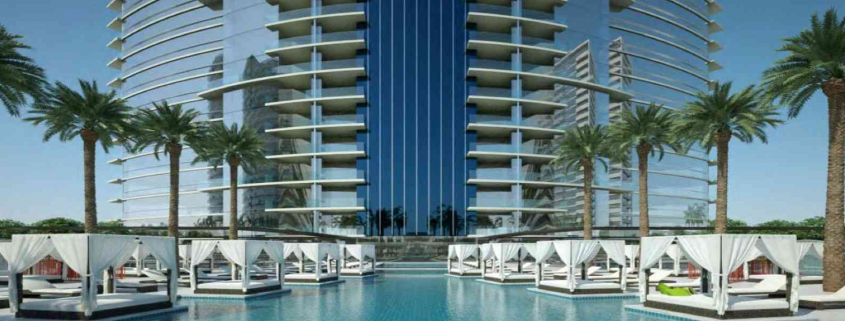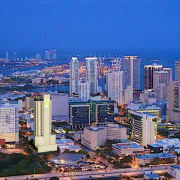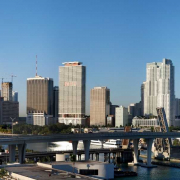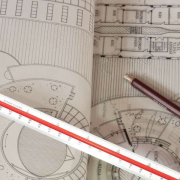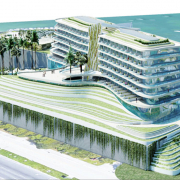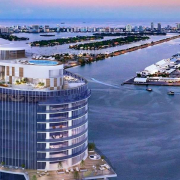Out-of-town buyers aren’t just snapping up Miami’s prime real estate — they’re also changing the way luxury developers build.
As more out-of-towners decide they want to put down roots in South Florida rather than simply buy investment properties for the rental market, they’re asking for bigger, better, more expensive designs. Units equipped with quarters for a nanny or maid. Guest suites for visiting relatives and friends. High-tech security with biometric identification.
Those requests come from both Latin Americans, who have driven Miami’s latest real estate boom, and wealthy Americans, who are appearing locally in greater numbers. Some developers, hoping to lure a growing pool of Chinese buyers, are even turning to “feng shui” consultants who specialize in the eastern art of balanced design.
“Foreign investment has completely changed our entire landscape from an architectural standpoint,” said Daniel de la Vega, president of One Sotheby’s International Realty. “People are bringing their families here to spend time, and that changes their needs. One Sotheby’s now advises all developer clients building units greater than 3,500 square feet to include live-in quarters for a maid or nanny,” de la Vega said.
At Paramount Miami Worldcenter, a luxury condo tower planned for downtown Miami, about 80 apartments out of a total 513 have a bedroom and bathroom — called a “lockout suite” — branching off from the main entrance near the unit’s private elevator. The studios, between 250 and 280 square feet, are envisioned as space for a maid or nanny, although they could also be used for teenage children who squawk for privacy or an elderly parent who needs quiet, said Peggy Fucci of OneWorld Properties, sales lead for the project. Units with a lockout suite start at about $1.5 million, or $650 per square foot.
In past projects, Fucci said, “we had people buying small units in addition to their main purchase because they wanted a place for the maid.” Now they expect that space to be available as part of their units.
Look To The Roofs
Families like to entertain and, in Miami, that naturally means enjoying the outdoors. Large outdoor terraces and elaborate rooftops are becoming the norm for high-end developments.
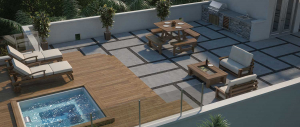 In single-family homes, the need for rooftop-space is partially driven by high land prices and small backyards. At Oasis Park Square, a 150-unit single-family home development marketed to Venezuelans, some backyards are large enough for a 392-square-foot pool. But the flat rooftops — tricked out with a jacuzzi and the option of a summer kitchen, as well as a bathroom — are where many homeowners will entertain. That wouldn’t be possible in Miami’s traditional Mediterranean style of building, which usually uses low-pitched tile roofs. The rooftops on these modernist homes are between 1,300 and 1,900 feet of open space. That’s more than a third of the size of many houses, which range from 3,300 to 4,000 square feet.
In single-family homes, the need for rooftop-space is partially driven by high land prices and small backyards. At Oasis Park Square, a 150-unit single-family home development marketed to Venezuelans, some backyards are large enough for a 392-square-foot pool. But the flat rooftops — tricked out with a jacuzzi and the option of a summer kitchen, as well as a bathroom — are where many homeowners will entertain. That wouldn’t be possible in Miami’s traditional Mediterranean style of building, which usually uses low-pitched tile roofs. The rooftops on these modernist homes are between 1,300 and 1,900 feet of open space. That’s more than a third of the size of many houses, which range from 3,300 to 4,000 square feet.
“The buyers find rooftop space very attractive,” said project architect Francillis Domond, who grew up in Venezuela. “Venezuelans have large extended families, and it’s very common to get together for family events at least every month.”
Oasis Park developer Masoud Shojaee of Shoma Group said when interviewed all but nine of the homes, which run from $1.15 million to more than $2 million, have already sold, with the majority going to Venezuelan buyers. “There is so much product on today’s market that you have to give the buyers exactly what they want,” Shojaee said.
Family Ties
 Families also need places for children to play.
Families also need places for children to play.
“Kids’ rooms in condos used to be an afterthought,” said developer Carlos Melo, co-owner of the Melo Group. For a project called Aria on the Bay that will open in fall 2017, Melo plans to include a 2,360-square-foot play room for children, equipped with toys, board games, rock-climbing, pingpong, televisions — and cameras linked up to the security room to soothe nervous parents. One of the project’s four swimming pools will be a shallow “kiddie” pool.
Melo said he thinks that some younger couples accustomed to life in Miami’s downtown and other major cities may not want to give up their urban lifestyles for the suburbs. Instead, he argues, they’ll look for high-rises with enough space for kids. “We are expecting a new generation of young families who want to live in the city,” Melo said.
Down From The Northeast
Domestic buyers are also making more of an impression on Miami’s market — meaning some developers are focusing on public transit, smaller units and semi-urban projects common in other big American cities.
Statistics on where exactly those buyers are coming from aren’t precise, said Ron Shuffield, president of EWM Realty International. But he said that through the first six months of 2015, the number of luxury buyers in Miami-Dade County, home of Miami, listing a New York address is up roughly 20 percent over the same period in 2014.
That’s important because the number of foreign buyers has been slowing as currency crises rock economies in Latin America and Europe. Cash sales — which often indicate international buyers — were down 12 percent in Miami-Dade in June 2015 compared with June 2014, according to the Miami Association of Realtors.
Townhomes are one sub-market that have appealed specifically to New York and northeast buyers, said Shojaee of Shoma Group. His firm built a 10-unit townhome project called Anastasia and has another 10-unit project called Santander scheduled to open by year’s end. The two-story walk-up homes at Santander are made from coral rock and start at $1.35 million for 3,000 square feet. Most buyers have been domestic.
New Balance
Chinese buyers also are growing in numbers, although they accounted for only 2 percent of international deals in South Florida in 2014, according to a report by the National Association of Realtors. But that’s double the number from 2012. Local brokers have visited Beijing to pitch buyers, including Ugo Colombo’s CMC Group.
And Paramount Miami Worldcenter has even hired Claudine De Bolle, a Miami-based feng shui consultant, to help make sure the condo’s common spaces have the right feel for Chinese buyers.
“It’s important for Chinese buyers to know the project was designed with feng shui because it is associated with good luck and prosperity in their culture,” De Bolle said.
De Bolle said she recommended that developers replace a lobby chandelier that was too angular in its design with one that used smoother features. “The chandelier was very beautiful, but it was very pointed coming down from the ceiling and it felt like a threat,” she said. Other recommendations included placing a fireplace in the lobby to balance the other feng shui elements of wood, earth, metal and water, and using matte tiles instead of a shinier material to slow the energy of a ninth-floor conservatory meant for reading and relaxation. Chinese buyers have accounted for about 15 percent of sales so far, according to developers.
Part of the reason South Florida has been so attractive to out-of-towners looking to buy a vacation home or relocate is because it is well-priced compared with other global cities. Urban apartments in London ($2,948 per square foot), New York ($2,024 per square foot) and Moscow ($1,243 per square foot) are all much pricier on average than Miami Beach ($760 per square foot), Miami ($475 per square foot) and Fort Lauderdale ($400 per square foot), according to research compiled by EWM in 2014.
And for developers there is a clear advantage to building and marketing buildings for end-users rather than investors. “Investor-dominated buildings face risks from fluctuations in foreign currencies,” said Jack McCabe, a housing market analyst based. But focusing on the high end of the real estate market means home prices and rental rates in Miami — already some of the nation’s highest compared with median income — won’t see any relief, he added.
“There’s very little that you would consider to be affordable that’s under construction,” McCabe said. “The developers have been targeting the sweet spot of the buyer pool, which is primarily affluent cash buyers.”
And if currency crises persist and some foreign buyers can’t close, some projects may go under or have to reduce prices.
“The upper end is almost like a separate market,” McCabe said. “The prices are so high above the rest of South Florida that we’re likely to see a correction just in the luxury end of the market if there’s not enough demand.”
Source: The Bulletin

